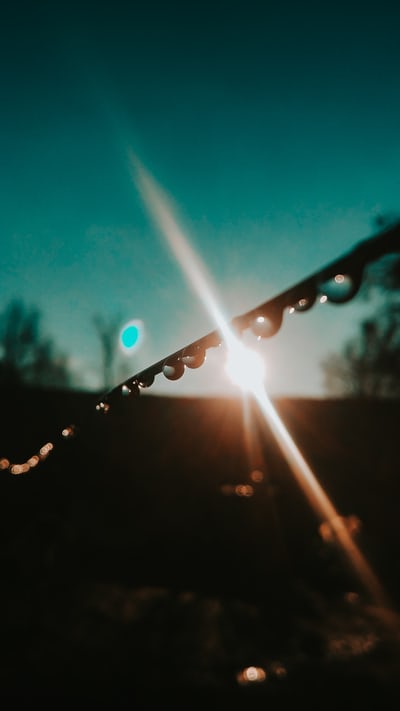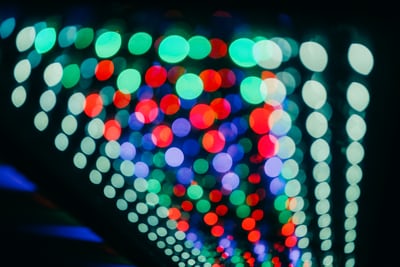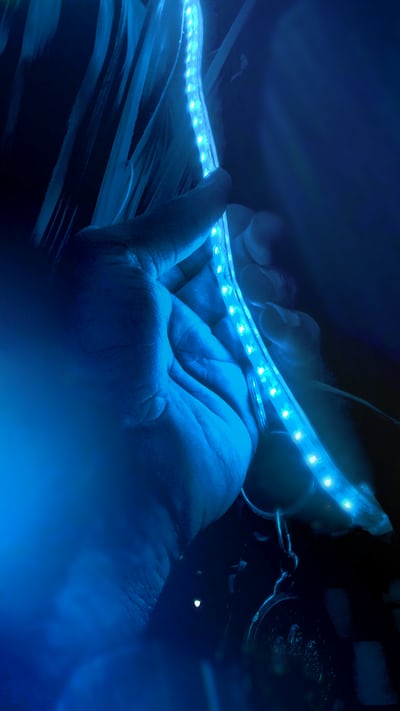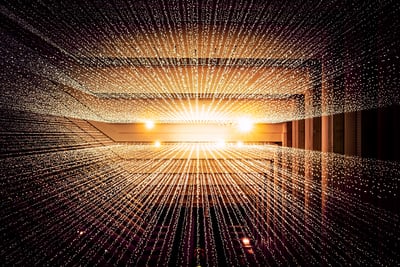Insights
Glare: Separating Fact from Fiction

There are many factors designers consider when it comes to outdoor lighting, and the best designs will consider the problems inherent to external environments to make the best design choices.
Glare remains one of the common problems lighting designers look to negate in all designs, be it exterior lighting or interior lighting, commercial lighting or residential lighting. An over-abundance of light at too high an intensity can cast a haze over the retina causing discomfort to the viewer, and in cases of very bright light even prove to be disabling. These sudden and extreme changes in light level to the viewer are at their best, any annoyance, and worst incapacitating.
General health and wellbeing rules and more specific regulations regarding lighting spaces do cover a variety of different factors, but glare is not generally considered an essential problem, despites its potential for distraction or disruption to any lighting scheme. Designers have created a range of solutions in the past to deal with this problem effectively, with varying results. To give a greater understanding of how to factor in glare prevention to lighting design, close attention must be paid the lighting sourced and their relative strength, their size and position within the viewers perspective.

LED Source Size and Technologies
LED products have something of a reputation as a source for potential glare, at least more so than their previous more traditional counterparts. As the light on an LED source is pixelated it provide a higher intensity illumination than a standard light source. As the light is more intense this eliminates the use of reflectors as used on HID lamps and bulbs. This combined with the pixelated nature of LED products can often create a non-uniform appearance, which is a factor in creating glare. Some designers try to solve this issue by simply decreasing the number of LEDs per area, but this can often worsen the problem, creating an even more uneven appearance.

The most common solution to this inherent problem with LED is to diffuse the light to create a more even luminance. This does of course soften the appearance of the light and helps to give a more unform look but can impact the effectiveness of the light source due to its dimming qualities. Designers may also try to reduce the possibility of glare by shortening the distance between lighting points, also know as the “pitch” of the LED. Whilst this does help to negate the possibility of lower light levels, it can often create a problem for designers, as a LED light with higher pitch can be more difficult to work into design schedule.
An innovative method for helping to minimise glare from LEDs is using a light guide lens that is lit along its edge. The LED are located at the end of light guided lens plate and when light is shown thru from one edge of the lens, luminance is created using reflection. This is the same method used commonly in LED televisions. Whilst this method can prove effective in solving glare issues, the control of light thru this method can be tricky, making it not the ideal solution in many scenarios, although technology is catching up to designer requirements.

Luminaire Glare Metrics
One of the ways designers have tried to combat the problem of glare, is to create and specify a standardised unit to help measure glare levels. However, no universal metric has yet been created which means widely varying results and no definitive solutions. UGR (Unified Glare Rating) remains one of the most commonly used metrics for measuring glare in interior settings. Methods for outdoor lighting have included such concepts as “glare control mark G” and “threshold increment IT”. Although their usage has been primarily limited to road settings for traffic purposes. G Rating (a system based on BUG rating scale) is also often used for outdoor assessment, this measures glare in terms of lumens, but due to some inherent problems such as measurement based on flux and other external factors affecting luminance, it is also not an ideal measurement system.
The multitude of differences in speculative environments and the relationship of the viewers within them, create an infinite number of variables, making creating a single metric for glare measurement a near impossible task.
Technology has provided us with a range of innovations to help combat the problems of glare, however for lighting designers there remains the problem of creating universal design standards that best help them navigate these problems, without the costly process of repeated testing and/or mock-ups. Hopefully with further research into this area of technology a universal metric can be found to measure glare, which will in turn massively impact and speed up processes for lighting designers.
Neue has been fighting glare for years and are lighting design experts when it comes to glare control. If you want your project to become extraordinary and have amazing lighting then get the team at neue a call.
